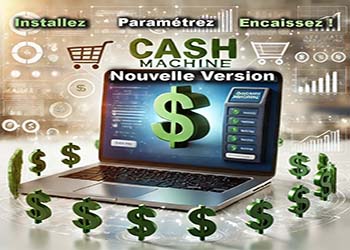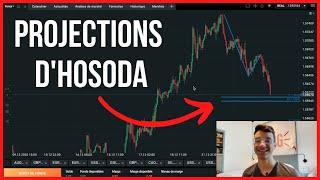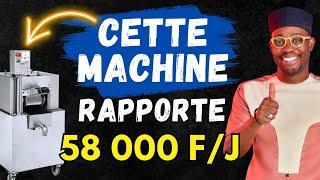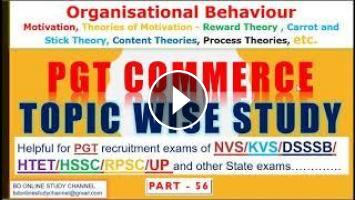https://t.me/joinchat/GrCkKRmmol5zvBM...
Click on above link to join our telegram group.
PGT COMMERCE COURSE:
https://www.youtube.com/watch?v=Aavb9...
MCQ SERIES https://www.youtube.com/watch?v=wijiM...
12 CBSE B ST
https://www.youtube.com/watch?v=-MqKe...
PREVIOUS PAPERS
https://www.youtube.com/watch?v=gV627...
This channel is useful for all learners, learned and aspirants of commerce subject and general awareness. Here, educational material and information is provided to all learners who are preparing for competitive exams such as PGT / TGT recruitment in Kendriya Vidyalaya, Centre School, Navodaya Vidyalaya, Sainik Schools, Military Schools, Haryana, UP, Bihar, Rajasthan, Delhi, DSSSB etc., UGC NET, SET, Accountants, IIT JEE, HTET, STET, BTET, UPTET, etc. We also provide helpful educational videos and content for students of class xi, xii, and others of CBSE and other boards mainly for subject of commerce, accountancy and business studies.
Motivation–Concepts and Applications:
Motive, Motivation and Motivators.
Motive: A motive is an inner state that energises, activates or moves and directs behaviour towards goals. Some such motives are – hunger, thirst, security, affiliation, need for comfort, recognition etc.
Motivation: Motivation is the process of stimulating people to action to accomplish desired goals. Motivation depends upon satisfying needs of people.
Motivators: Motivator is the technique used to motivate people in an organisation. Managers use diverse motivators like pay, bonus, promotion, recognition, praise, responsibility etc.
Process of motivation:
Unsatisfied needs and motives
Tension
Action to satisfy needs and motives
Goal accomplishment
Feedback
Intrinsic and Extrinsic Motivators
Intrinsic motivation comes from within, and it’s usually driven by individuals’ needs to do something for themselves.
Extrinsic motivation comes from an external source.
Categories of incentives to motivate employees:
Monetary incentives- Those incentives which satisfy the subordinates by providing them rewards in terms of rupees.
Non-monetary incentives- Those incentives which cannot be measured in terms of money are under the category of Non- monetary incentives. Such incentives can satisfy the ego and self- actualization needs of employees. These can be of the following types: -
Security of service
Praise or recognition
Job enrichment
Promotion opportunities
Positive Incentives - Positive incentives generally have an optimistic attitude behind and they are generally given to satisfy the psychological requirements of employees. For example-promotion, praise, recognition, perks and allowances, etc.
Negative Incentives - Negative incentives are those whose purpose is to correct the mistakes or defaults of employees. For example- demotion, transfer, fines, penalties.
Theories of Motivation:
1. Traditional Theories – Fear and Punishment theory, Reward theory, Carrot and Stick theory.
2. Modern Theories – Content theories, Process theories.
FEAR AND PUNISHMENT THEORY – Forcing people to work by threatening to punish or dismiss them.
REWARD THEORY – Reward for efforts made by workers.
CARROT AND STICK THEORY – Combination of both rewards(carrot) and punishments(stick).
CONTENT THEORIES: Content theories of motivation focus on what people need in their lives (i.e. what motivates them). Major content theories are Maslow's hierarchy of needs, Alderfer's ERG theory, Herzberg's motivator-hygiene theory, and McClelland's learned needs or three-needs theory.
PROCESS THEORIES: Process theories look at the psychological and behavioural processes that affect an individual's motivation. The major process theories of motivation are Victor Vroom’s expectancy theory, equity theory, goal-setting theory, and reinforcement theory.
MASLOW'S HIERARCHY OF NEEDS THEORY:
Abraham Maslow developed the hierarchy of needs, which suggests that individual needs exist in a hierarchy consisting of physiological needs, security needs, belongingness needs, esteem needs, and self-actualization needs.
1. Physiological needs/Basic needs - the most basic needs for food, water, and other factors necessary for survival.
2. Security needs/Safety needs - needs for safety in one's physical environment, stability, and freedom from emotional distress.
3. Belongingness needs/Social needs/Love needs - desires for friendship, love, and acceptance within a given community of individuals.
4. Esteem needs/Ego needs - associated with obtaining the respect of one's self and others.
5. Self-actualization needs - corresponding to the achievement one's own potential, i.e. to becoming the best person one can possibly be.
Click on above link to join our telegram group.
PGT COMMERCE COURSE:
https://www.youtube.com/watch?v=Aavb9...
MCQ SERIES https://www.youtube.com/watch?v=wijiM...
12 CBSE B ST
https://www.youtube.com/watch?v=-MqKe...
PREVIOUS PAPERS
https://www.youtube.com/watch?v=gV627...
This channel is useful for all learners, learned and aspirants of commerce subject and general awareness. Here, educational material and information is provided to all learners who are preparing for competitive exams such as PGT / TGT recruitment in Kendriya Vidyalaya, Centre School, Navodaya Vidyalaya, Sainik Schools, Military Schools, Haryana, UP, Bihar, Rajasthan, Delhi, DSSSB etc., UGC NET, SET, Accountants, IIT JEE, HTET, STET, BTET, UPTET, etc. We also provide helpful educational videos and content for students of class xi, xii, and others of CBSE and other boards mainly for subject of commerce, accountancy and business studies.
Motivation–Concepts and Applications:
Motive, Motivation and Motivators.
Motive: A motive is an inner state that energises, activates or moves and directs behaviour towards goals. Some such motives are – hunger, thirst, security, affiliation, need for comfort, recognition etc.
Motivation: Motivation is the process of stimulating people to action to accomplish desired goals. Motivation depends upon satisfying needs of people.
Motivators: Motivator is the technique used to motivate people in an organisation. Managers use diverse motivators like pay, bonus, promotion, recognition, praise, responsibility etc.
Process of motivation:
Unsatisfied needs and motives
Tension
Action to satisfy needs and motives
Goal accomplishment
Feedback
Intrinsic and Extrinsic Motivators
Intrinsic motivation comes from within, and it’s usually driven by individuals’ needs to do something for themselves.
Extrinsic motivation comes from an external source.
Categories of incentives to motivate employees:
Monetary incentives- Those incentives which satisfy the subordinates by providing them rewards in terms of rupees.
Non-monetary incentives- Those incentives which cannot be measured in terms of money are under the category of Non- monetary incentives. Such incentives can satisfy the ego and self- actualization needs of employees. These can be of the following types: -
Security of service
Praise or recognition
Job enrichment
Promotion opportunities
Positive Incentives - Positive incentives generally have an optimistic attitude behind and they are generally given to satisfy the psychological requirements of employees. For example-promotion, praise, recognition, perks and allowances, etc.
Negative Incentives - Negative incentives are those whose purpose is to correct the mistakes or defaults of employees. For example- demotion, transfer, fines, penalties.
Theories of Motivation:
1. Traditional Theories – Fear and Punishment theory, Reward theory, Carrot and Stick theory.
2. Modern Theories – Content theories, Process theories.
FEAR AND PUNISHMENT THEORY – Forcing people to work by threatening to punish or dismiss them.
REWARD THEORY – Reward for efforts made by workers.
CARROT AND STICK THEORY – Combination of both rewards(carrot) and punishments(stick).
CONTENT THEORIES: Content theories of motivation focus on what people need in their lives (i.e. what motivates them). Major content theories are Maslow's hierarchy of needs, Alderfer's ERG theory, Herzberg's motivator-hygiene theory, and McClelland's learned needs or three-needs theory.
PROCESS THEORIES: Process theories look at the psychological and behavioural processes that affect an individual's motivation. The major process theories of motivation are Victor Vroom’s expectancy theory, equity theory, goal-setting theory, and reinforcement theory.
MASLOW'S HIERARCHY OF NEEDS THEORY:
Abraham Maslow developed the hierarchy of needs, which suggests that individual needs exist in a hierarchy consisting of physiological needs, security needs, belongingness needs, esteem needs, and self-actualization needs.
1. Physiological needs/Basic needs - the most basic needs for food, water, and other factors necessary for survival.
2. Security needs/Safety needs - needs for safety in one's physical environment, stability, and freedom from emotional distress.
3. Belongingness needs/Social needs/Love needs - desires for friendship, love, and acceptance within a given community of individuals.
4. Esteem needs/Ego needs - associated with obtaining the respect of one's self and others.
5. Self-actualization needs - corresponding to the achievement one's own potential, i.e. to becoming the best person one can possibly be.
- Catégories
- E commerce Affiliations















Commentaires